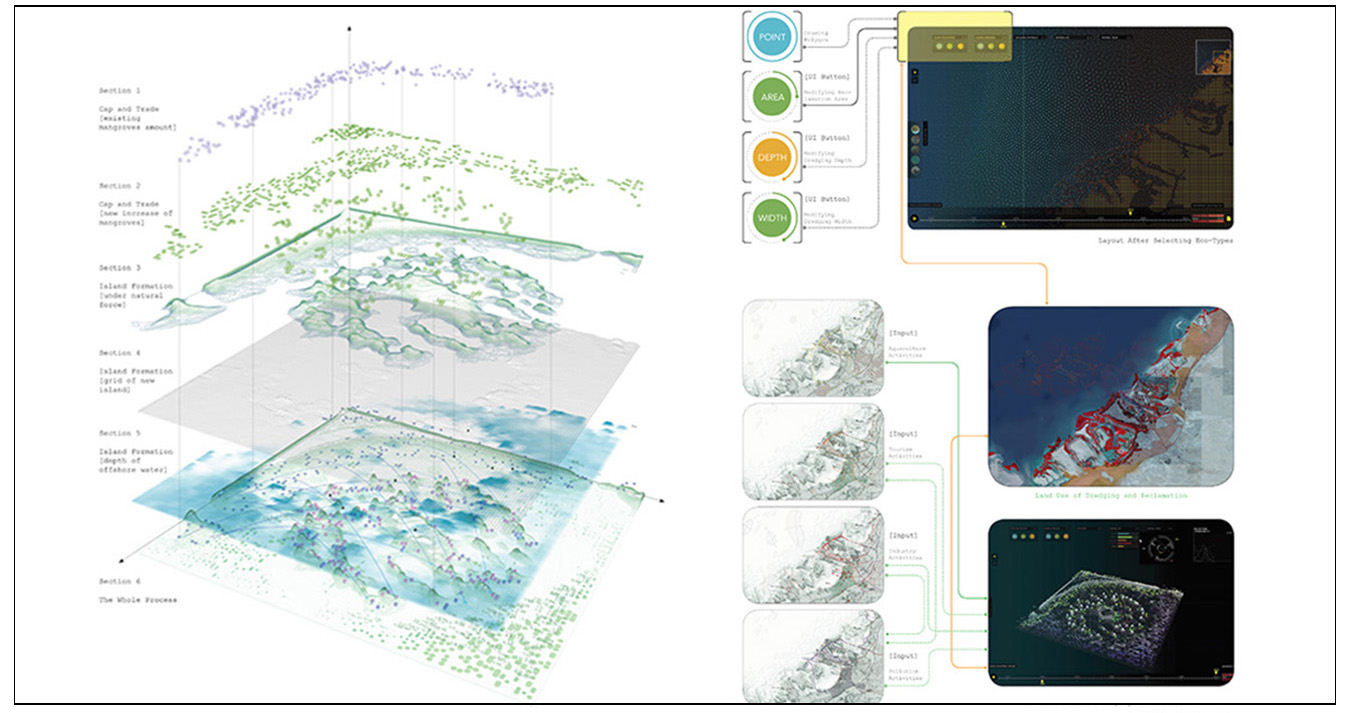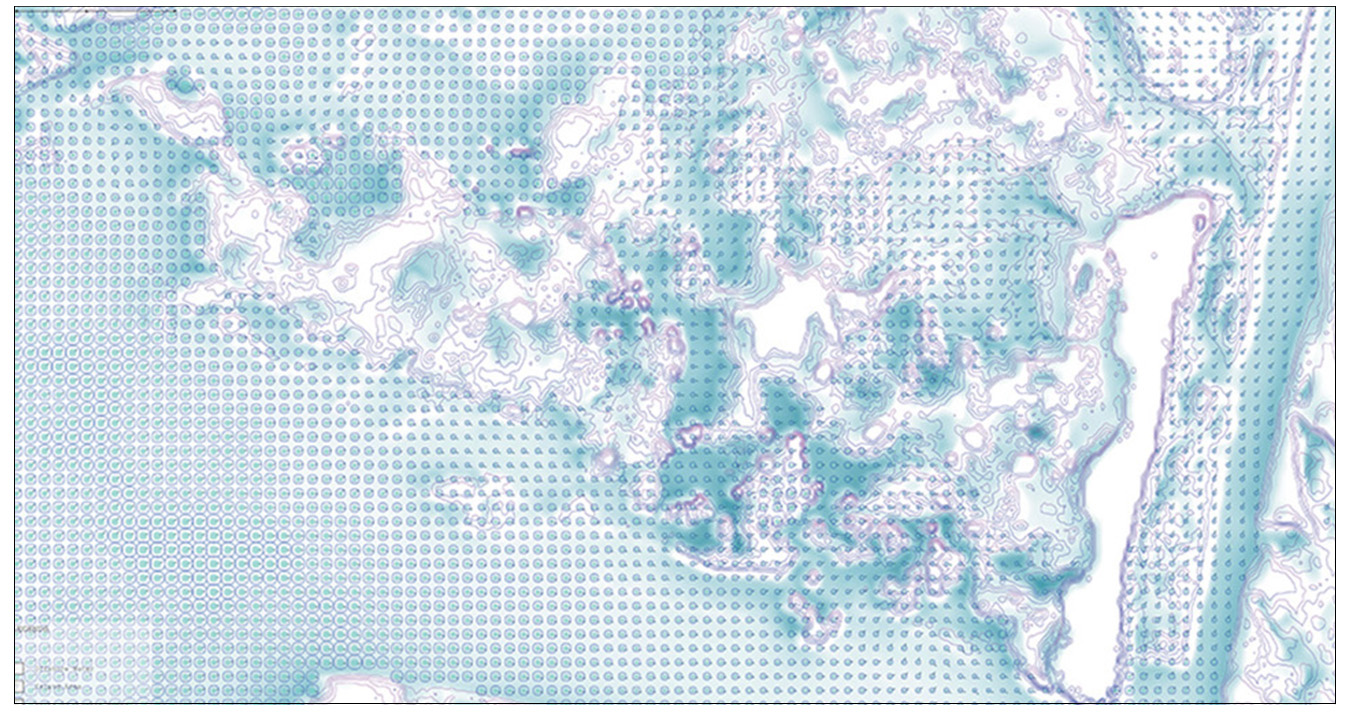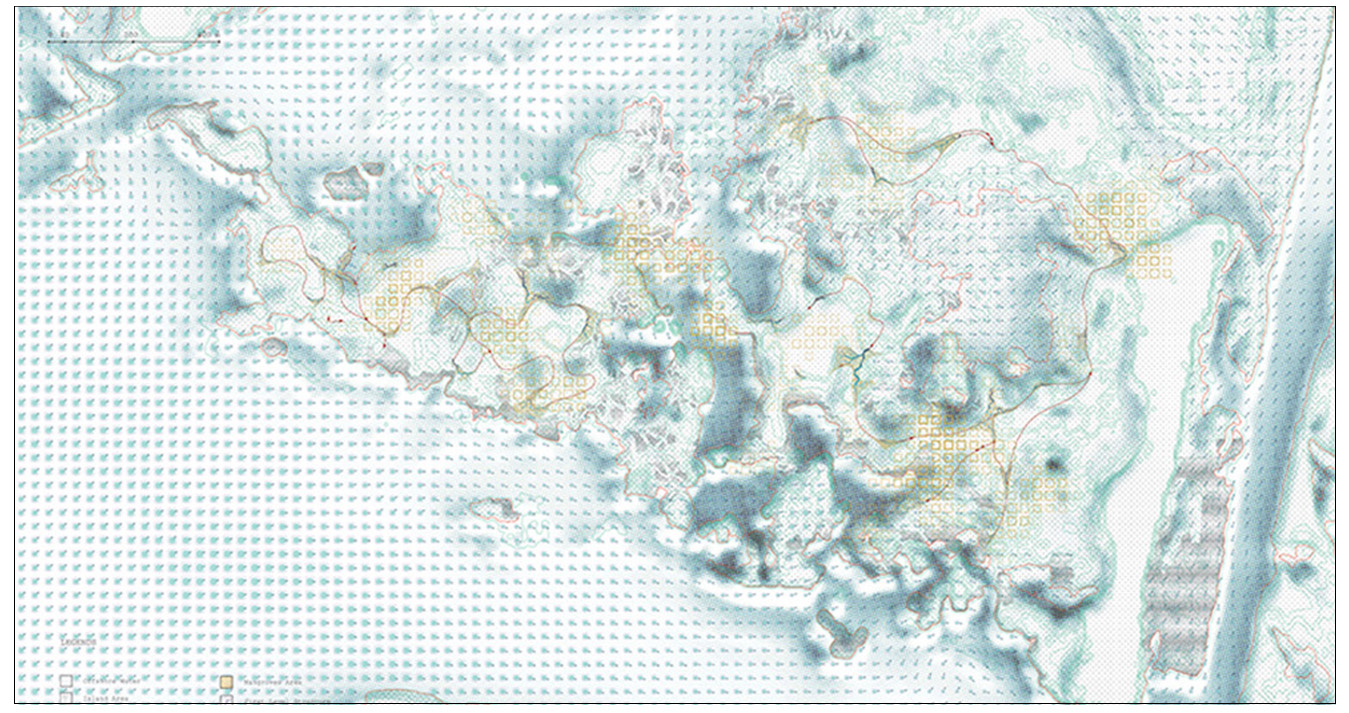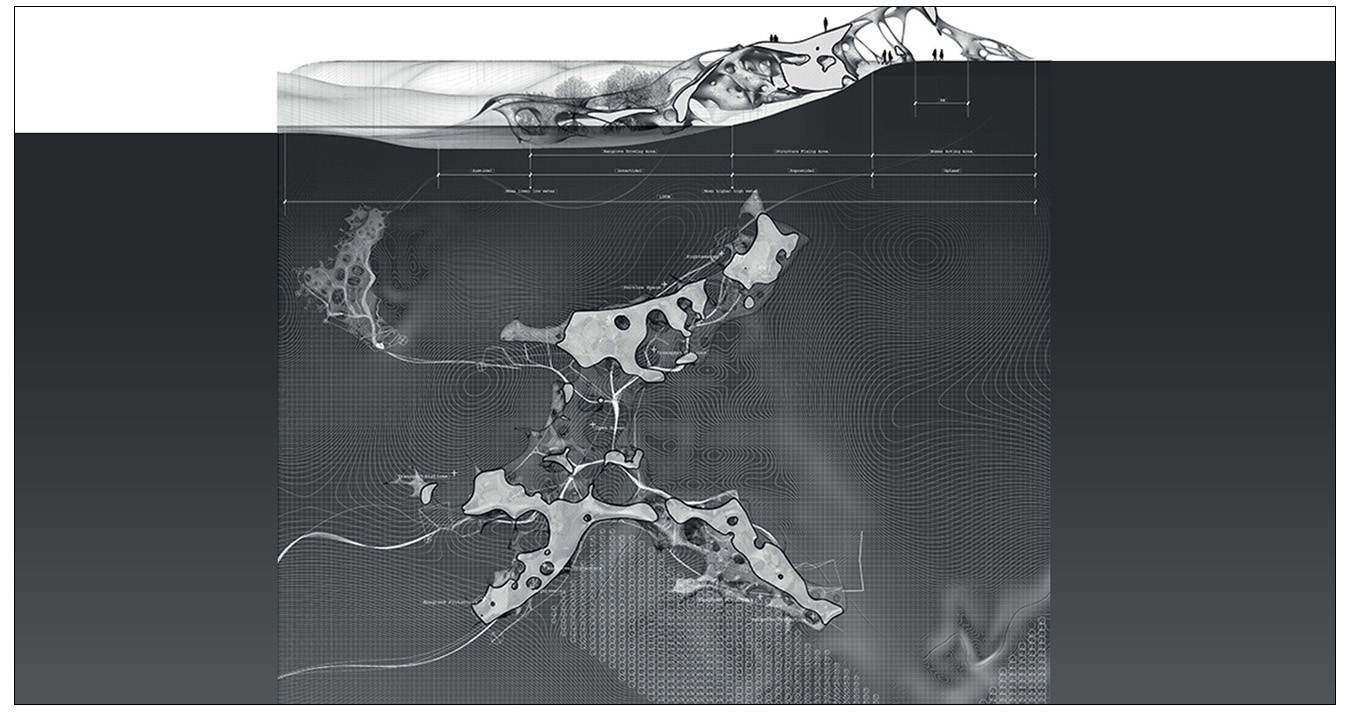
Intertidal Engine
During the past 30 years, with the rapid development
of Abu Dhabi’s economy, great changes have occurred in physical environment, especially in coastal area due to development of its industries, such as oil gas, tourism and recreation industry. The artificial coast- line change has also caused significant effects on its marine and coastal eco-systems.
Many studies have shown that the decline of diversi- ty of the marine ecosystem mainly results from its reclamation activities related with the construction of artificial islands. Moreover, the traditional con- structiontechniques of those islands result into an unrecoverable situation for marine ecosystem. Focusing on this problem, our design comes tackles it from two sides: one regards policy development and the other the construction techniques.
For the policy side, an interface will be developed to allow involving agents (or actors) to engage with information on reclamation, such as location, scale, effects to ecosystem and therefore, to coordinate dif- ferentdecisions with regulations – ‘cap and trade’. For the technicalities of the construction methods, we design new processes for constructing artificial is- lands. Those construction techniques are developed af- terstudies on traditional construction methods while exploring the capacities of new materials. In contrast to the traditional ways of building against natural forces, such as waves, tides, we intend to make use of nature’s dynamism to generate islands’ morphologies learned from Netherlands’ ‘SAND ENGINE’. In order to dynamically fix some parts of the island under con- structionwe develop methods of the process by applying new materials.
- [year] 2015
- [Credits] Jiateng Sun/ Xuyuan Yao/ Junyi Chen/ Yiran Hu
- [Design Tutors] Enriqueta Llabres Valls, Zachary Flucker
- [H+T ] Nuria Alvarez
Intertidal Engine
During the past 30 years, with the rapid development
of Abu Dhabi’s economy, great changes have occurred in physical environment, especially in coastal area due to development of its industries, such as oil gas, tourism and recreation industry. The artificial coast- line change has also caused significant effects on its marine and coastal eco-systems.
Many studies have shown that the decline of diversi- ty of the marine ecosystem mainly results from its reclamation activities related with the construction of artificial islands. Moreover, the traditional con- structiontechniques of those islands result into an unrecoverable situation for marine ecosystem. Focusing on this problem, our design comes tackles it from two sides: one regards policy development and the other the construction techniques.
For the policy side, an interface will be developed to allow involving agents (or actors) to engage with information on reclamation, such as location, scale, effects to ecosystem and therefore, to coordinate dif- ferentdecisions with regulations – ‘cap and trade’. For the technicalities of the construction methods, we design new processes for constructing artificial is- lands. Those construction techniques are developed af- terstudies on traditional construction methods while exploring the capacities of new materials. In contrast to the traditional ways of building against natural forces, such as waves, tides, we intend to make use of nature’s dynamism to generate islands’ morphologies learned from Netherlands’ ‘SAND ENGINE’. In order to dynamically fix some parts of the island under con- structionwe develop methods of the process by applying new materials.













